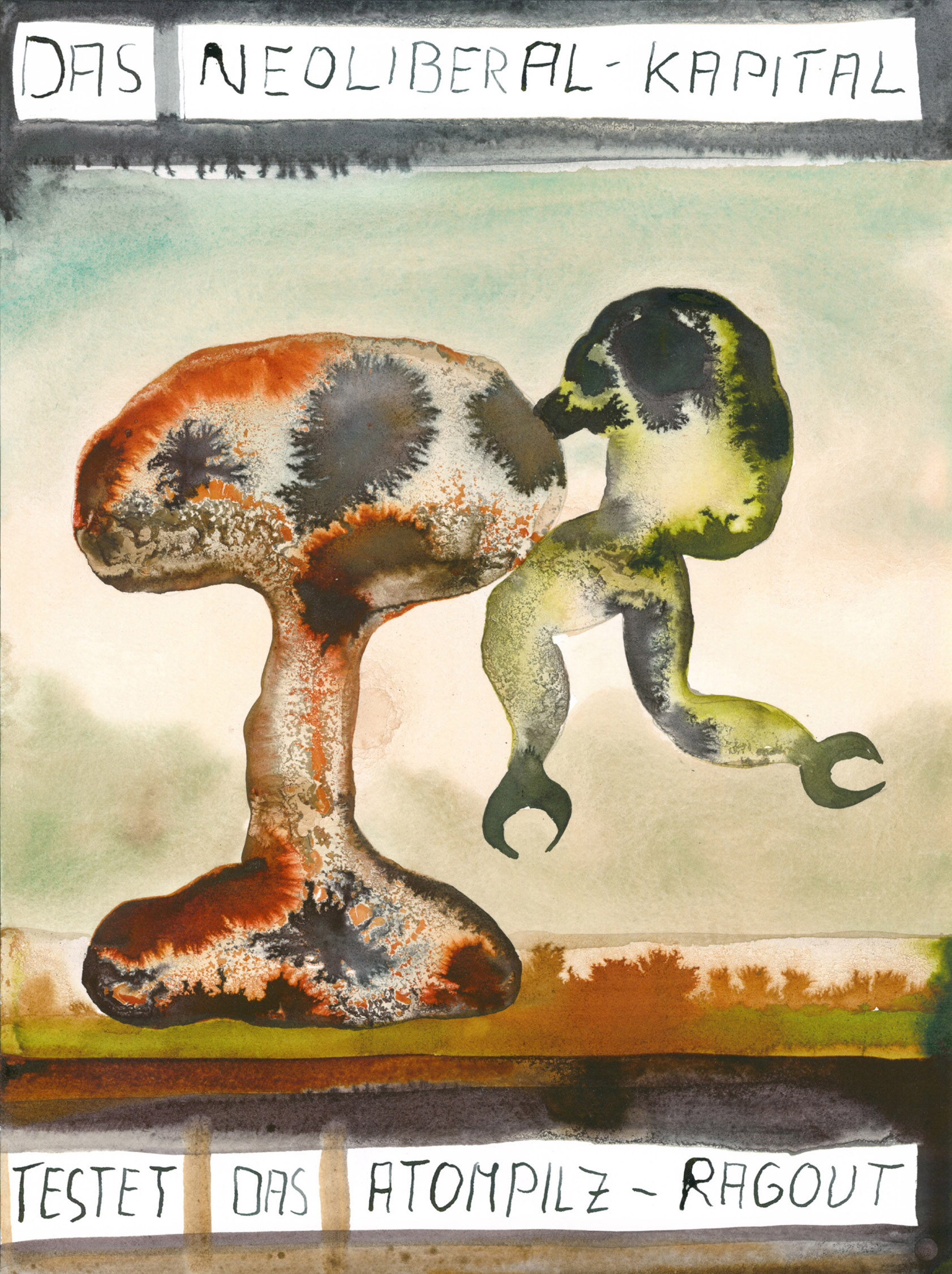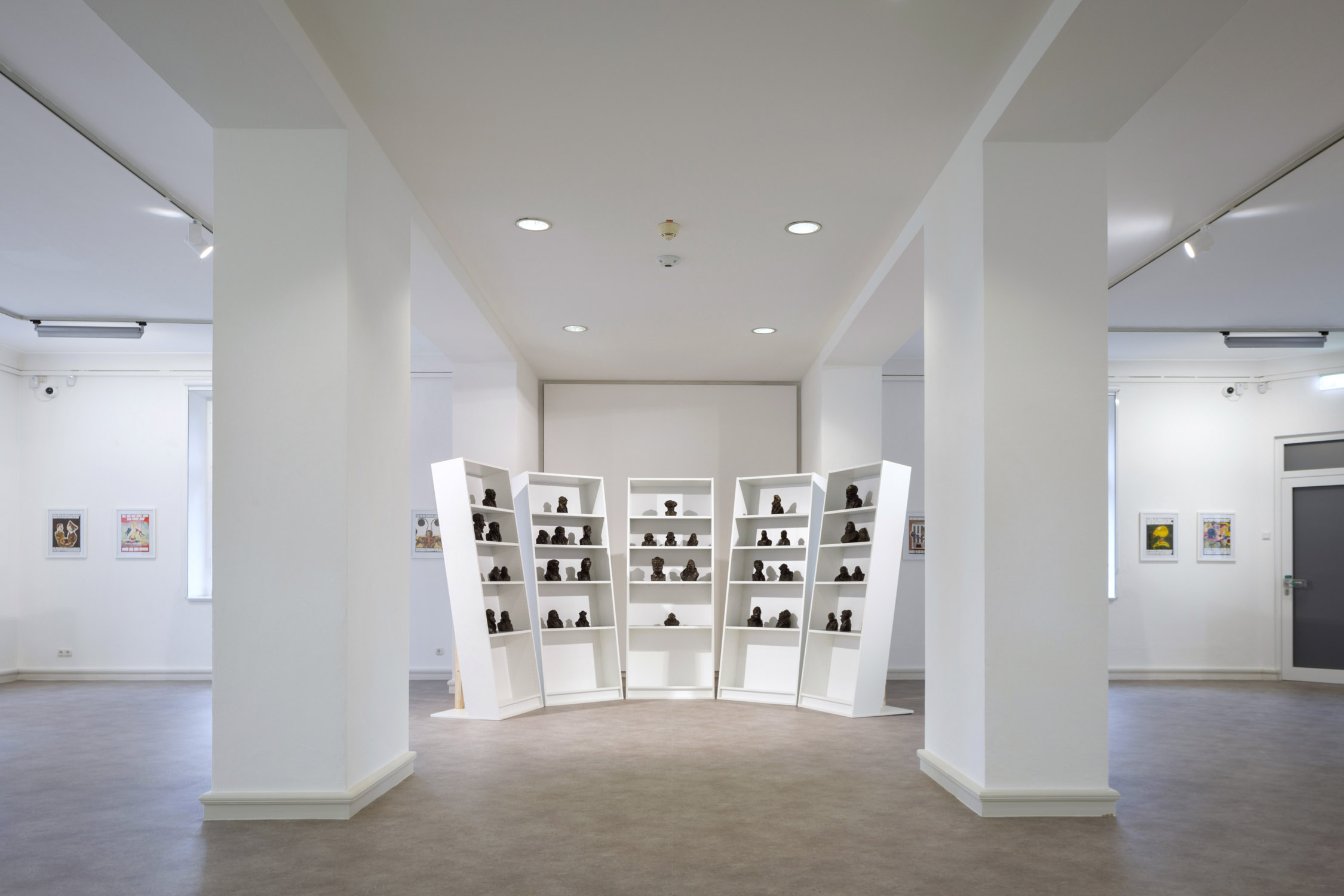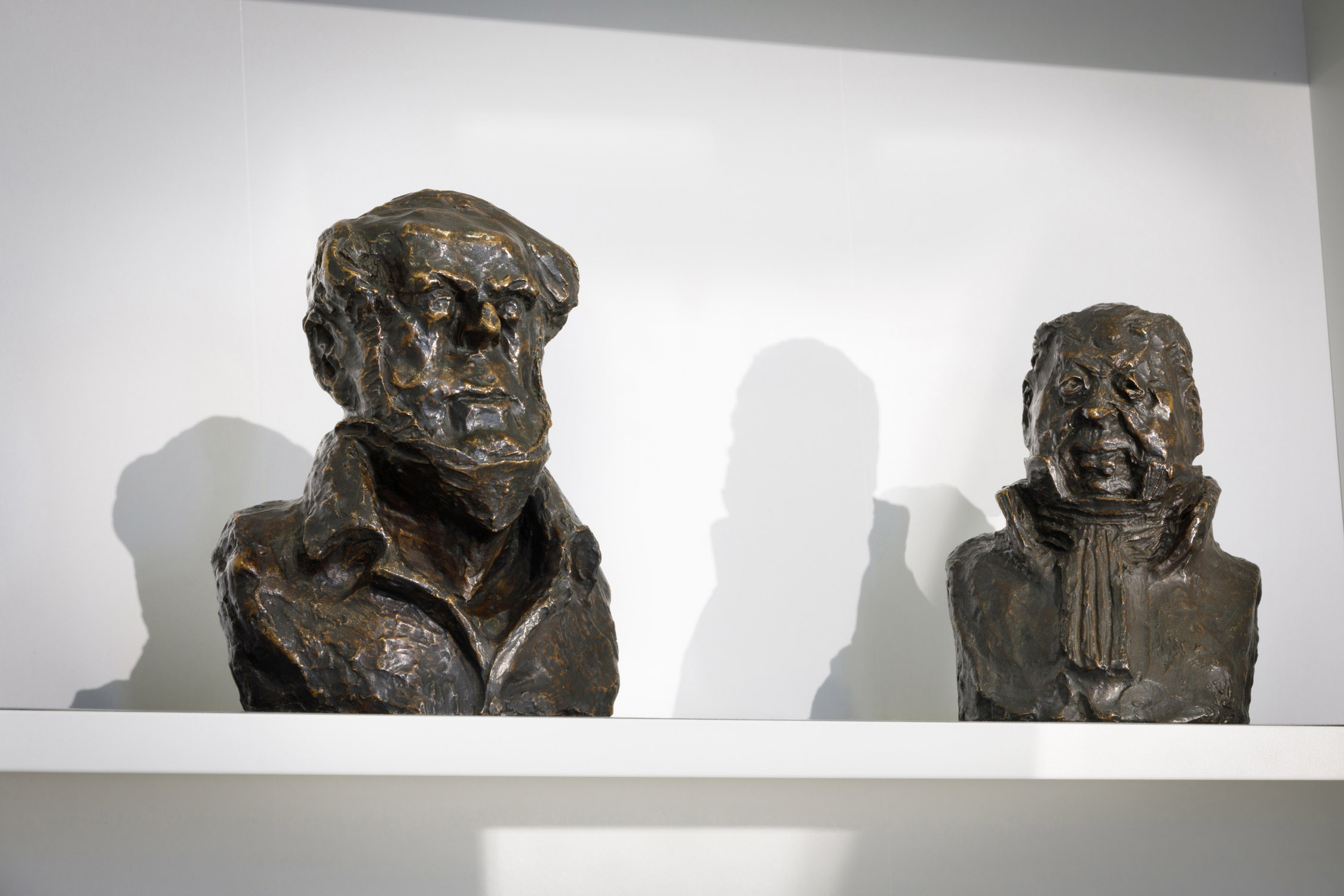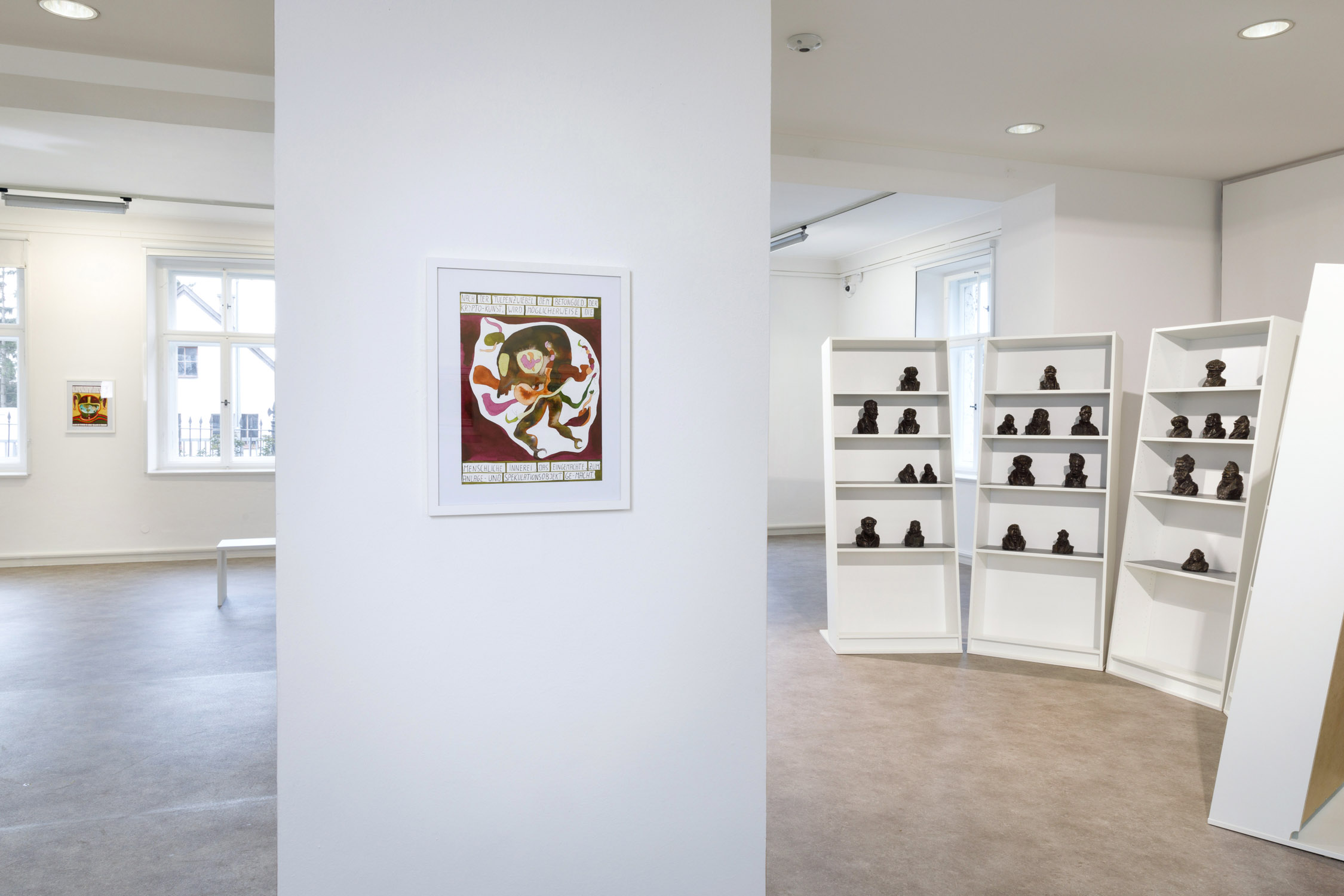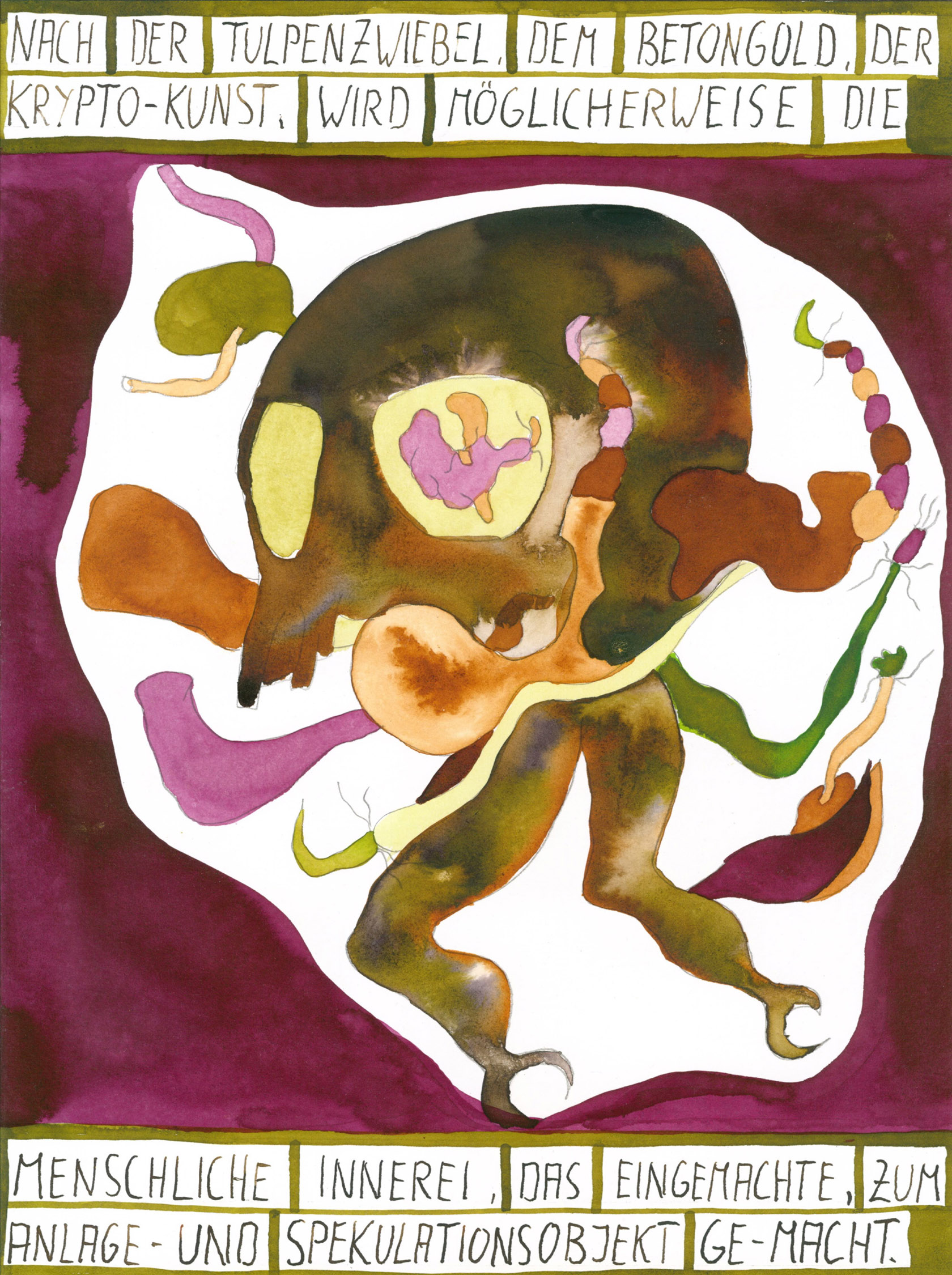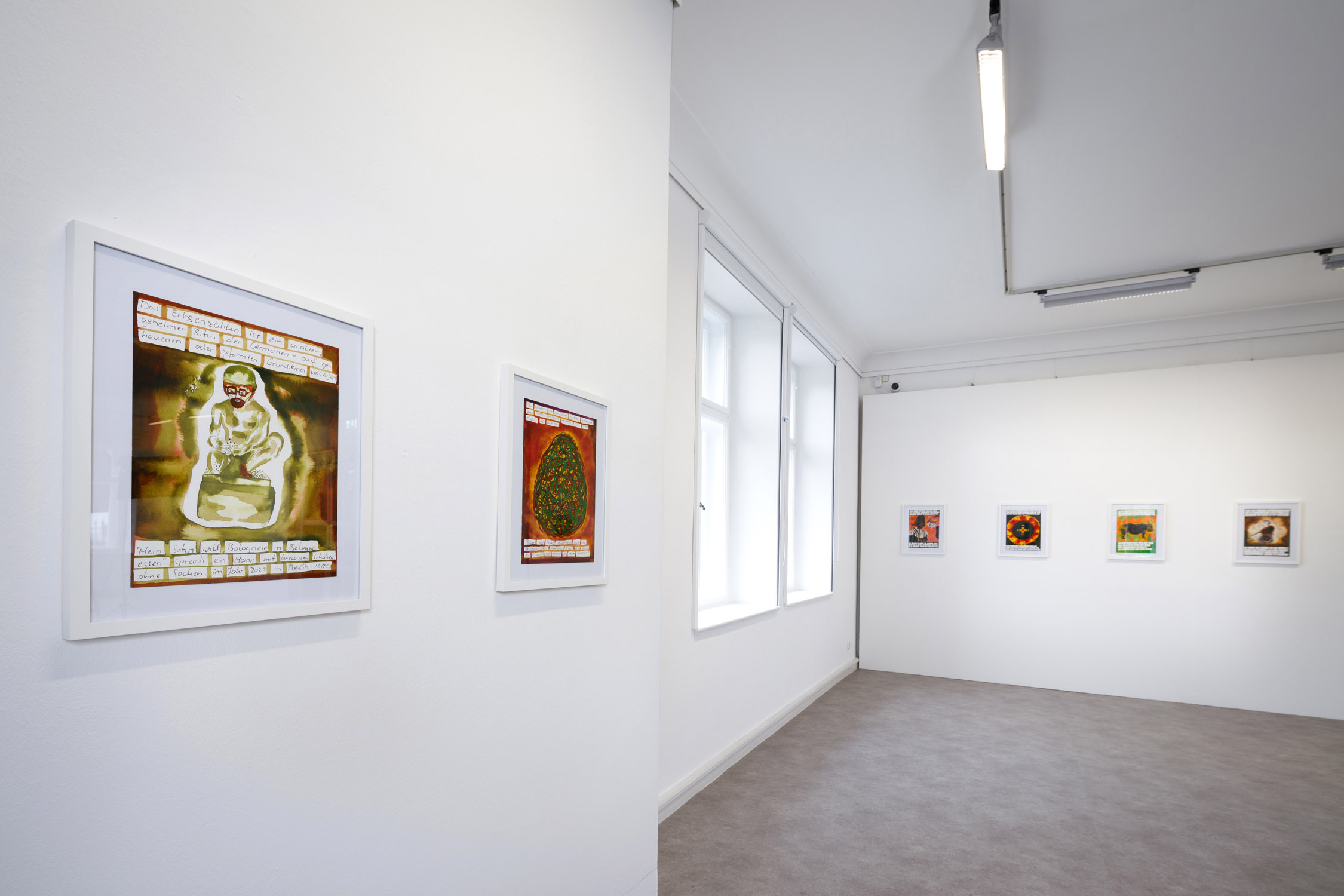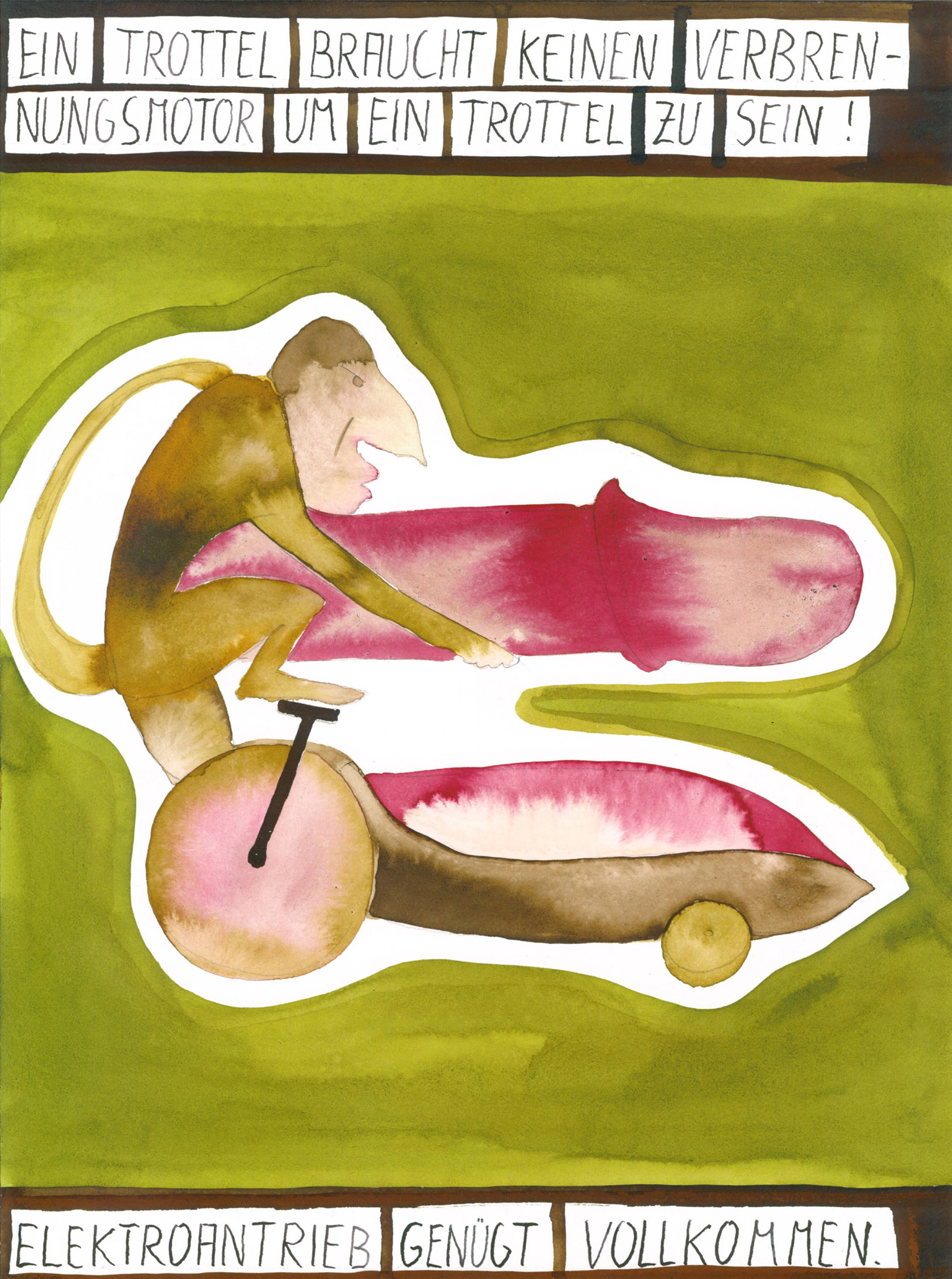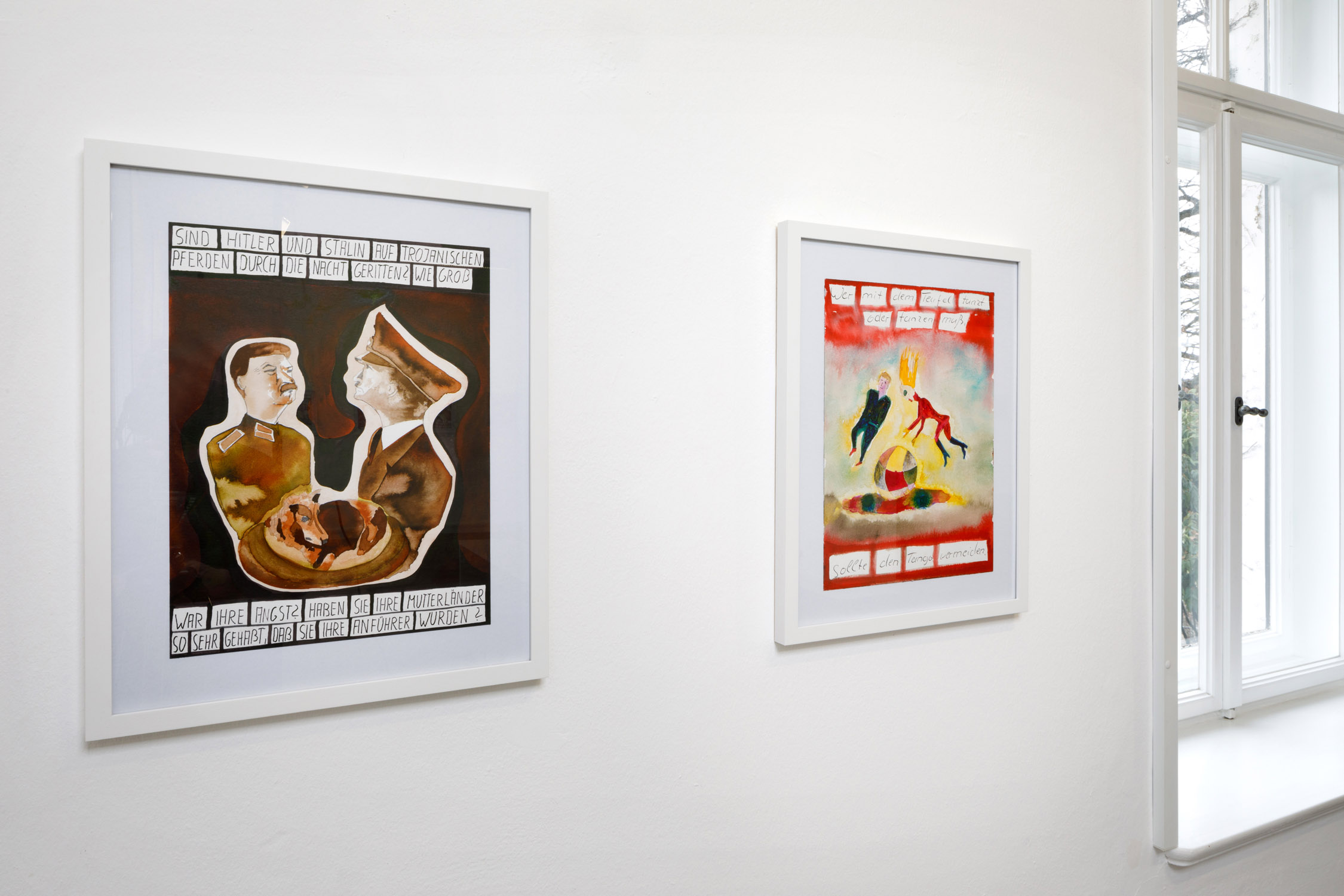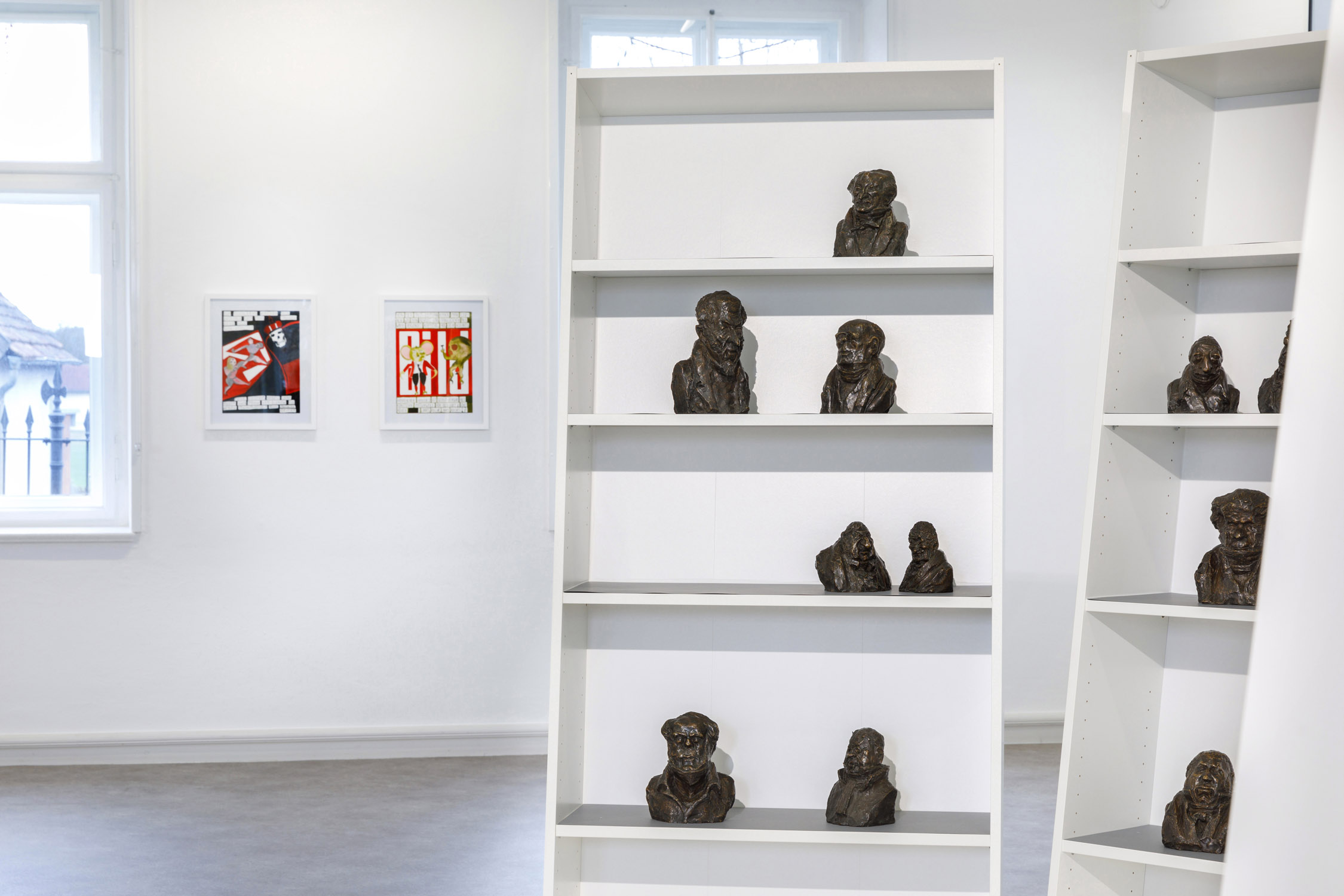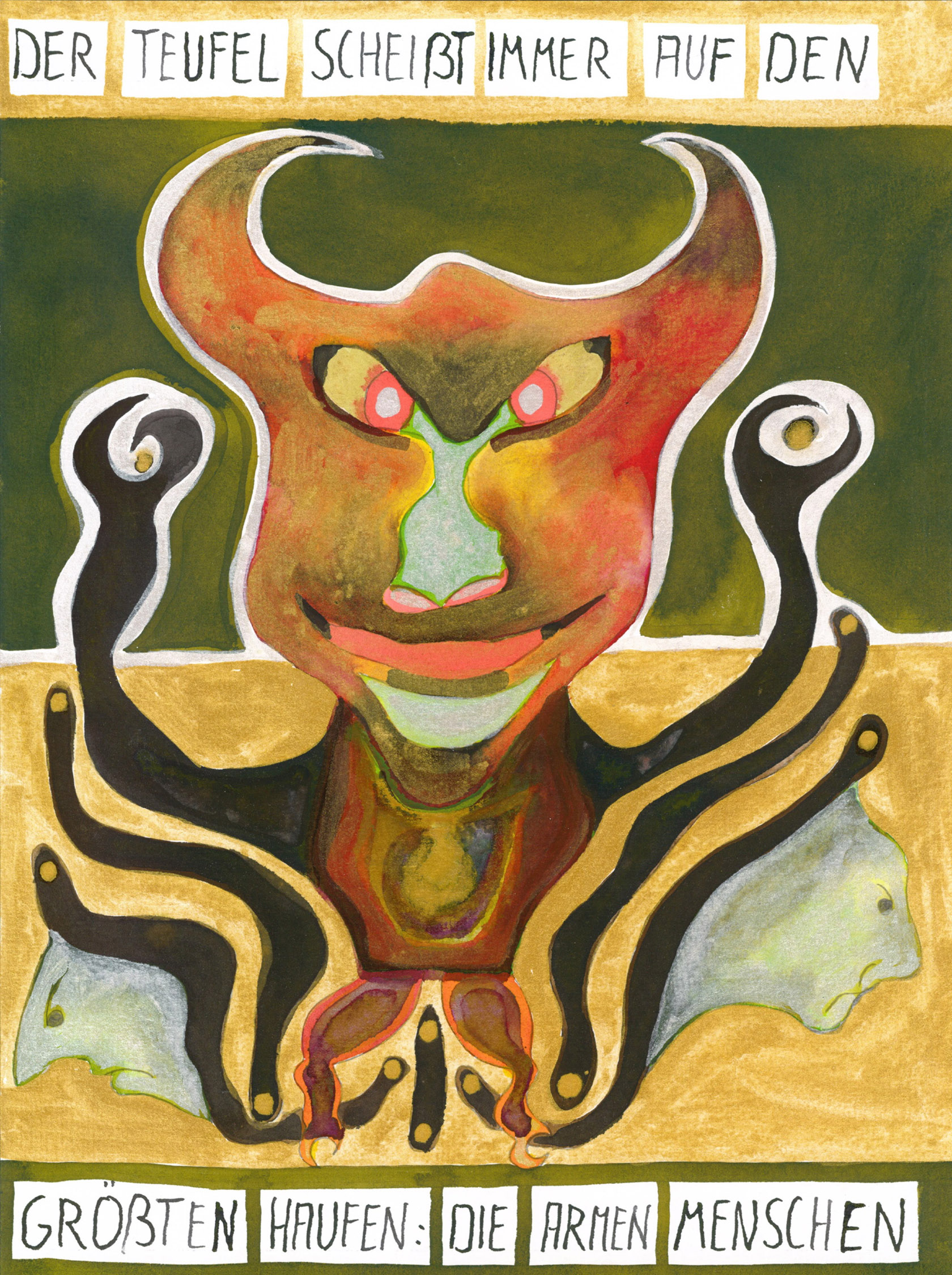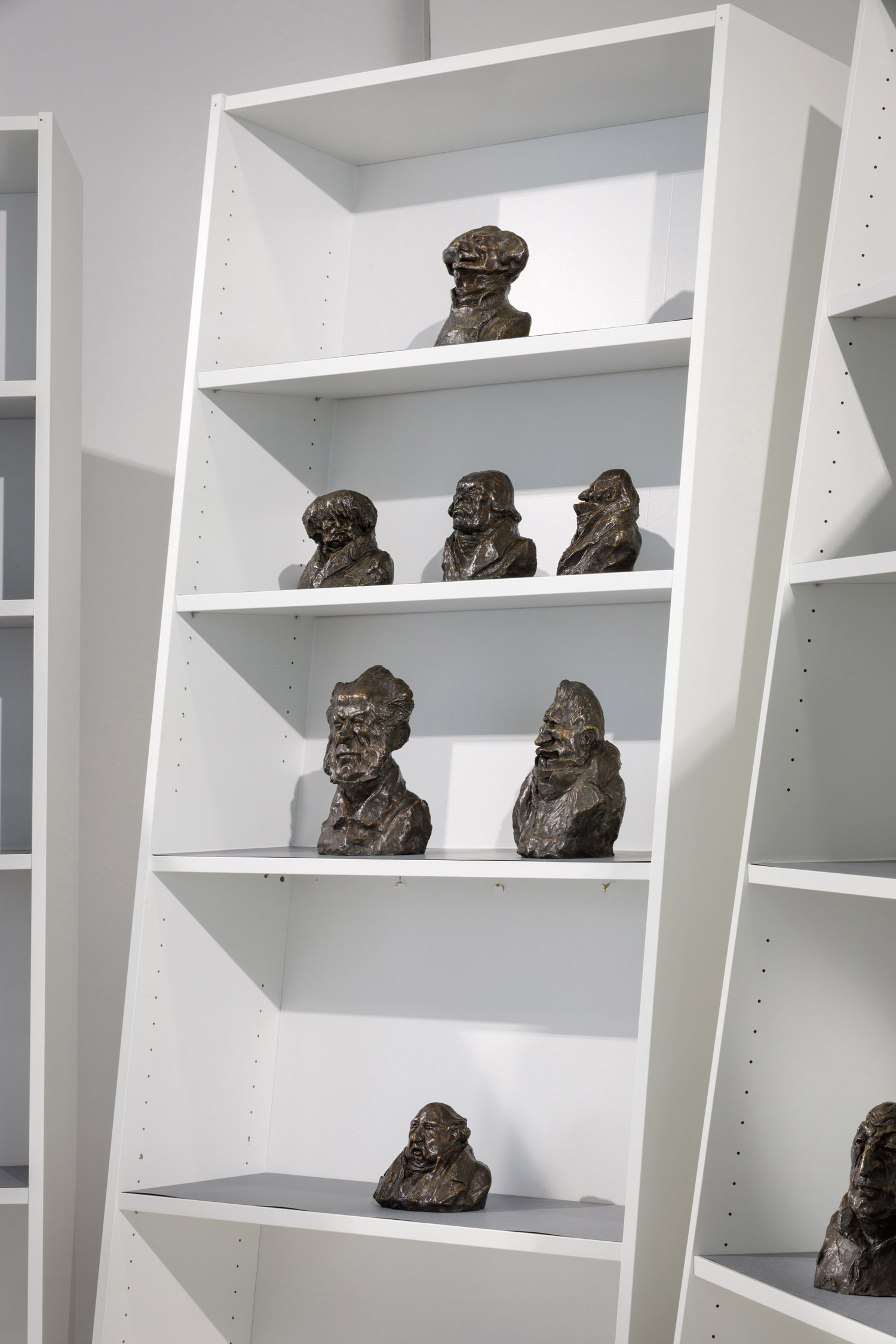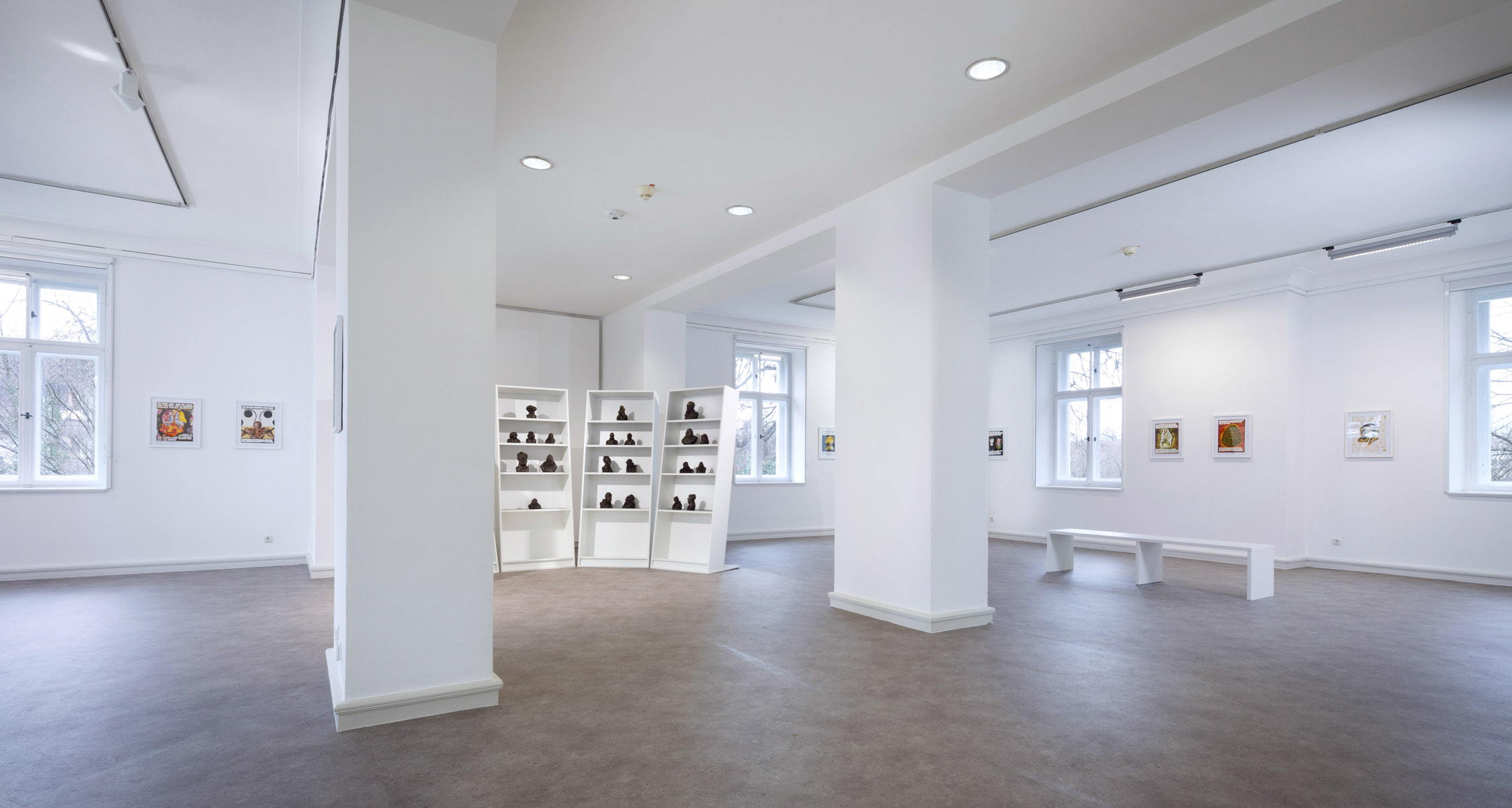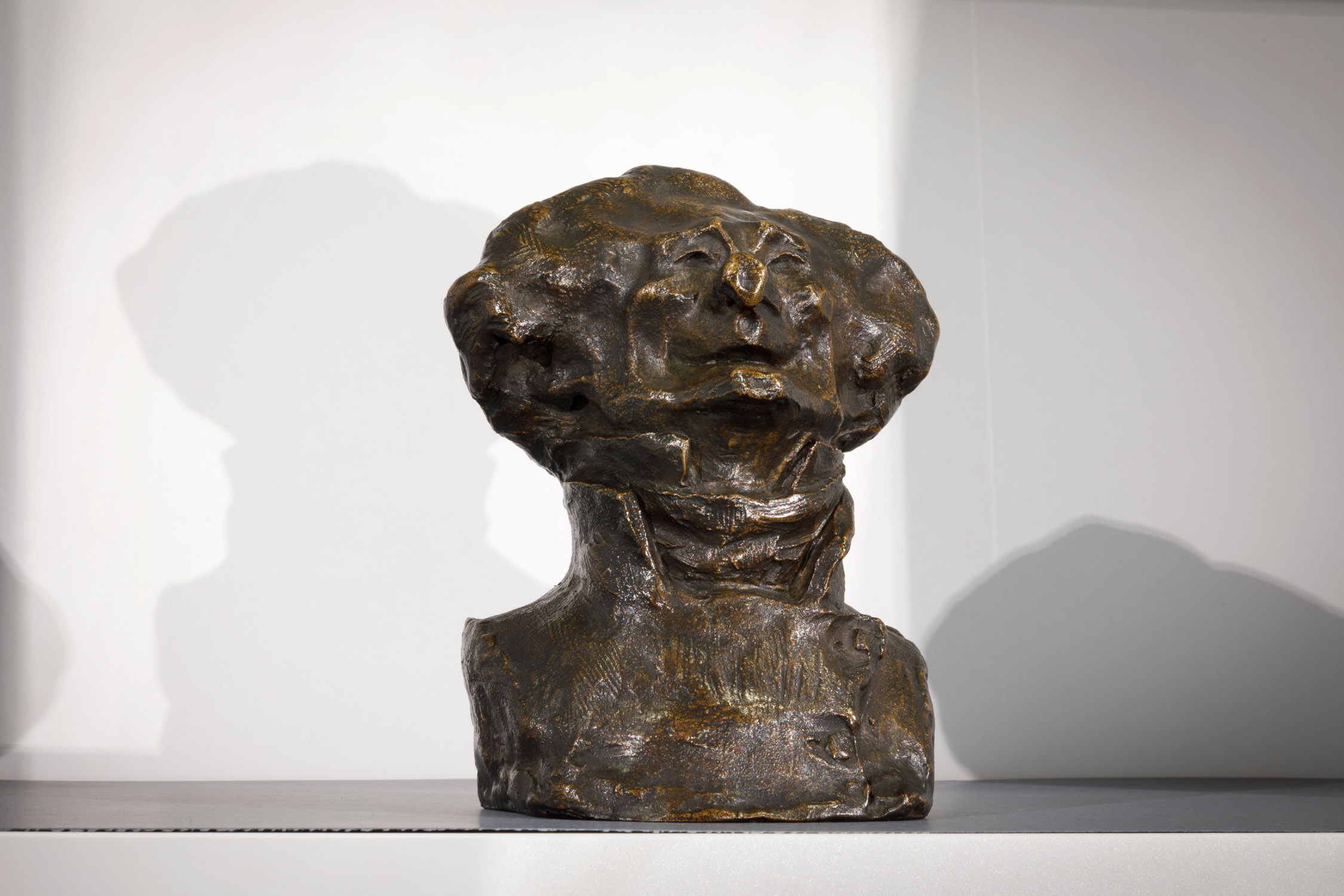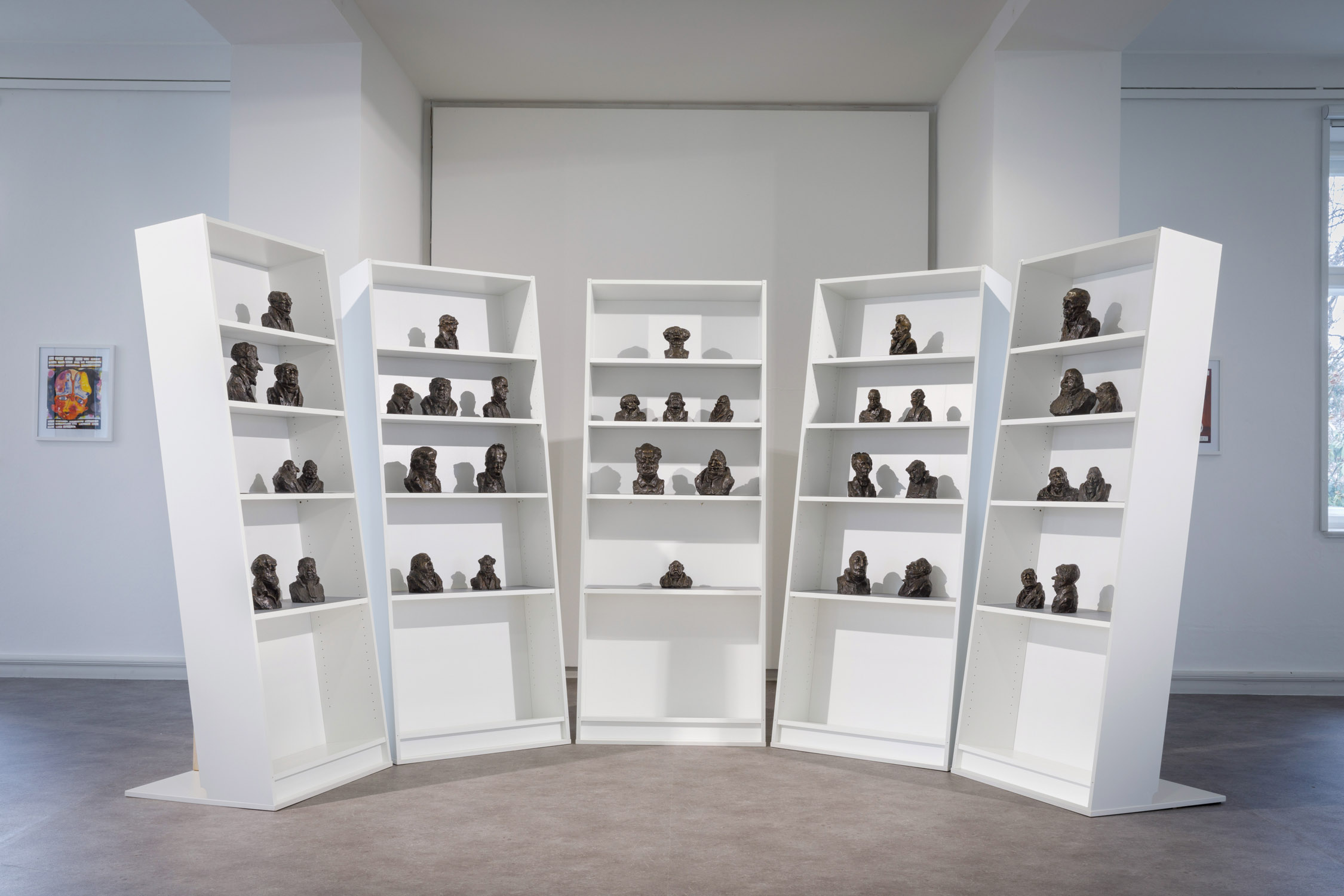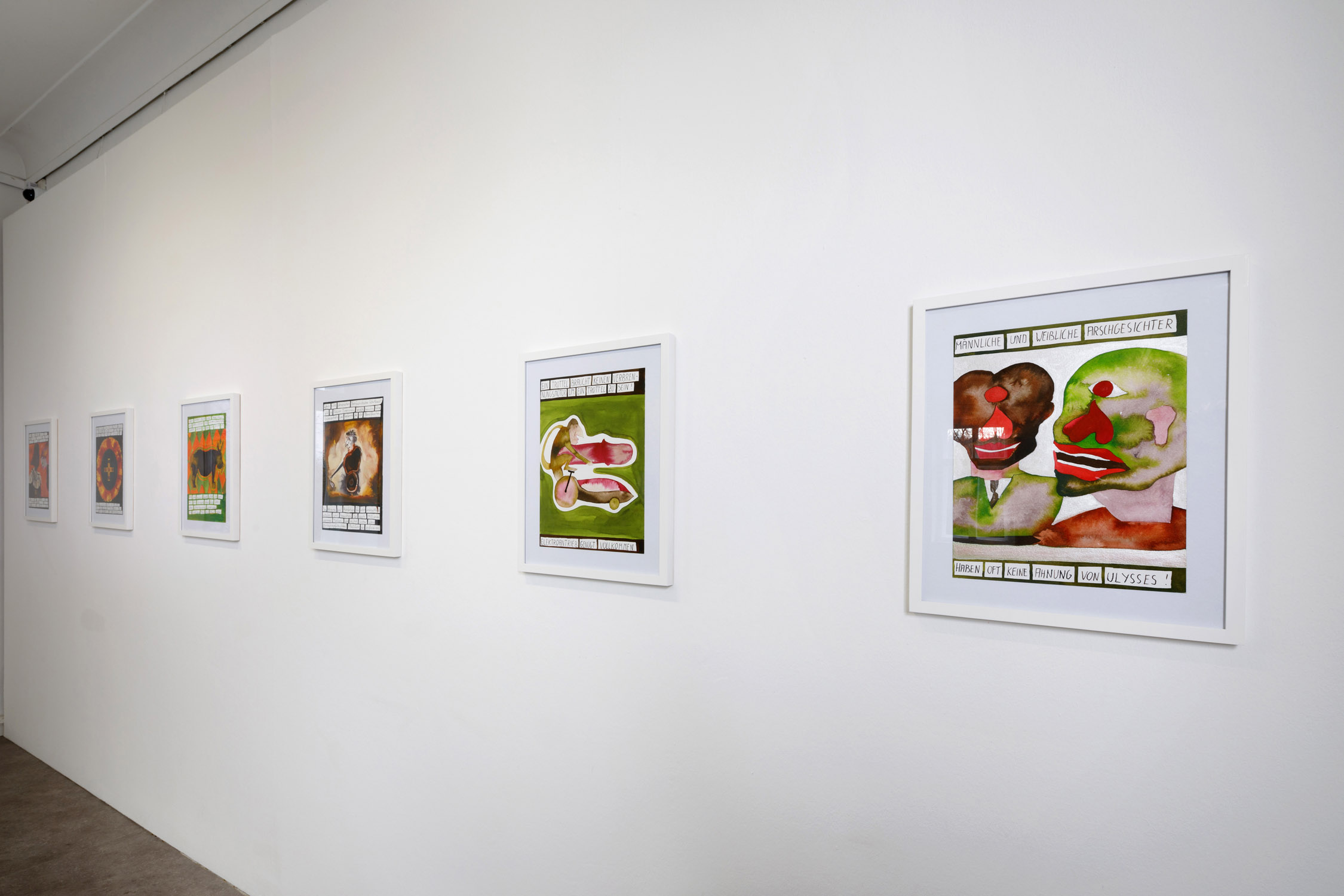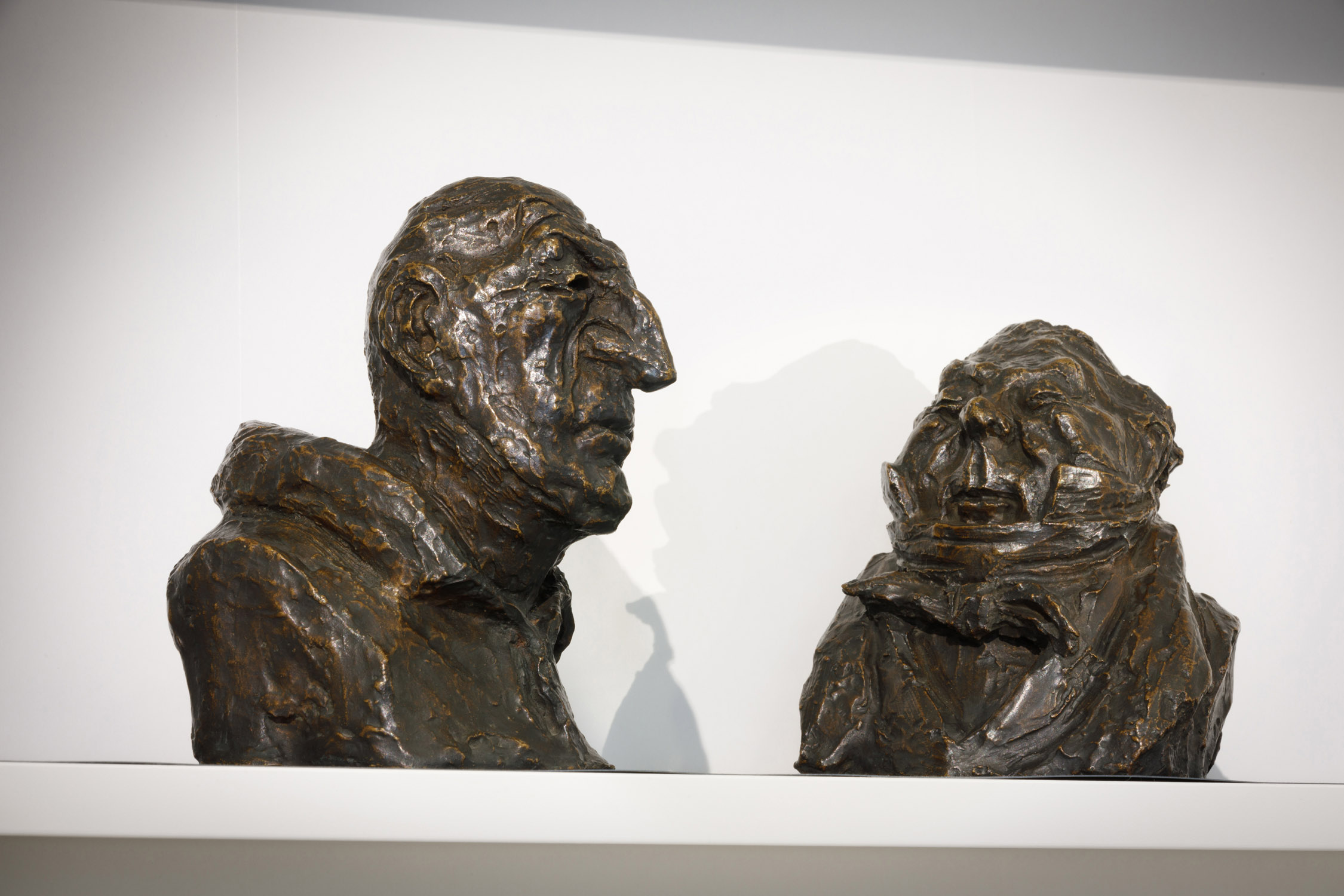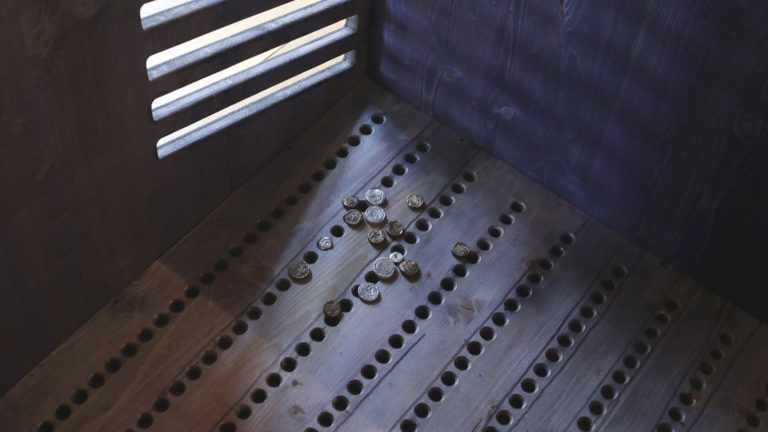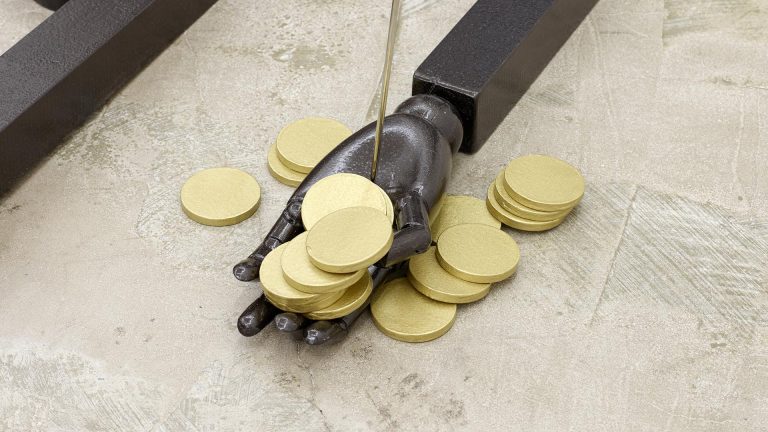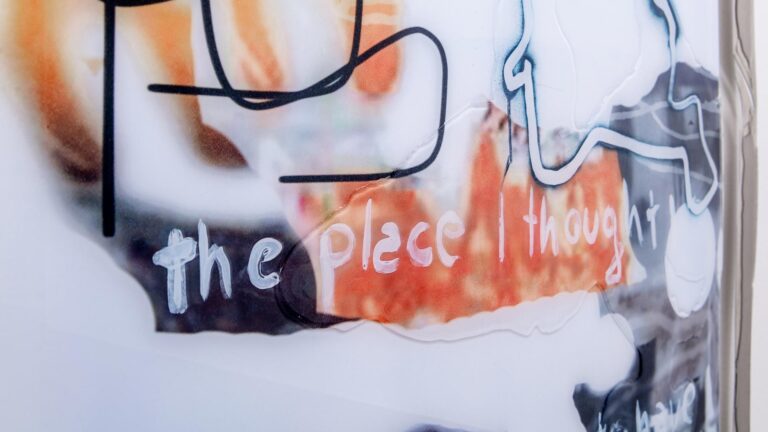Artist: Tom Biber with Honoré Daumier
Exhibition title: The Pearl Necklace of the Elites: Honoré Daumier’s Parliament of the July Monarchy in Dialogue with Tom Biber
Curated by: Jürgen Dehm
Venue: Kebbel-Villa, Schwandorf, Germany
Date: January 28 – March 17, 2024
Photography: Clemens Mayer / all images copyright and courtesy of the artist and Kebbel-Villa, Schwandorf
With Honoré Daumier and Tom Biber, 19th-century French sarcasm in bronze and contemporary, satirical analyses of the current affairs of the 21st century on paper, come together in the Kebbel Villa at the beginning of 2024.
A display created especially for the exhibition transforms the space on the ground floor into a “Plenary Chamber.” The parliamentarians of the French July Monarchy of the 1830s – interpreted by Daumier as sculptures and presented in the form of bronze busts – silently face the visitors’ gaze. The watercolors by Tom Biber that surround them, provide commentary on the present day: sharp, bitter, but also humorous text and image combinations exploring the abysses that the individual faces in the capital-controlled everyday life of the 21st century.
Daumier began his series of Célébrités du Juste milieu, or “political celebrities”, in 1832. The 36 portrayed figures are all well-known French politicians and civil servants – with one exception: Although the bust of Daumier’s friend Charles Philipon, the editor of the magazine Charivari, stands out in this milieu and acts as a counterpoint to the civil servants, it is visually consistent with the group.
According to legend, Daumier sculpted his “parliamentarians” in the Chamber of Deputies using clay that he brought with him. However, it is more likely that he worked in his studio based on his impressions from memory. The original busts are made of unfired clay and painted in color. They were once on display at the publishing house of the magazine Charivari, where, at Daumier’s request, they were to be used as references by other press illustrators. Today, the originals can be found in the Musée d’Orsay in Paris. Only a handful of complete sets in bronze, probably made at the end of the 1920s, are known to exist worldwide, most of which are in American museums such as the National Gallery in Washington.
Daumier’s preoccupation with the parliamentarians series extended over several years, partly because he was sentenced to prison for his depiction of the King as Gargantua (1831), a work that had been banned and confiscated by the censors. He had to serve his sentence between September 1832 and February 1833, although part of the time was spent under house arrest in rather comfortable conditions. The sheet, which made the censors’ blood boil, caricatures King Louis-Philippe as a gigantic monster who devours the people’s money, distributes it to his favorites, and excretes a mass of paper.
This topic may also have appeared in a slightly modified form in a drawing by Tom Biber. The artist, who has Bavarian roots, draws attention to politicians and public figures who act on the basis of self-serving, sometimes dishonest motives. The catastrophe of National Socialism – and the associated warning against the rise of a “new right” – is also a central theme in Biber’s work. His analysis of his fellow citizens is ruthless and to the point, spiced with a pinch of paranoia and plenty of humor. Every day, he paints snapshots of a fragile world that is already unravelling and doomed.
Honoré Daumier (1808 Marseille, FR – 1879 Valmondois, FR) is best known for his sociocritical caricatures for the satirical magazines Le Caricature and Le Charivari. His extensive oeuvre also includes painting and sculpture. After working as an errand boy for a bailiff and as an assistant to a bookseller, Daumier began an apprenticeship as a lithographer. He also attended the free “Académie Suisse”, where he practiced life drawing. Over the course of 40 years, he produced two to three lithographs a week. His pictorial legacy includes 4,000 lithographs, 200 paintings, 800 drawings, and around 1,000 drawn templates for wood engravings. Daumier produced only around 120 sculptural works.
Tom Biber (*1966 Ingolstadt, DE, lives in Berlin, DE) is an artist, curator, and art collector. After growing up in a “socially deprived area” of Ingolstadt, he worked in the IT sector in Munich in the 1980s. He co-developed one of the first electronic TV guides and one of the first chat groups. After leaving the IT sector, he moved to Berlin, where he organized charity auctions for SOS Children’s Villages for ten years. Since retiring from fundraising, he has devoted himself entirely to his artistic practice. In addition to Honoré Daumier, his main influences are William Blake and especially Günter Brus.
The exhibition was realized in cooperation with the Akademie der Künste, Berlin
Tom Biber and Polly in front of Honoré Daumier’s Parliament of the July Monarchy, exhibition view 2024, Kebbel Villa, Schwandorf
The Pearl Necklace of the Elites: Honoré Daumier’s Parliament of the July Monarchy in Dialogue with Tom Biber, exhibition view 2024, Kebbel Villa, Schwandorf
Honoré Daumier, Jean Vatout (1791-1848), MP, and Alexandre Lecomte (born ca. 1778), lawyer, exhibition view 2024, Kebbel Villa, Schwandorf
Honoré Daumier, Jean-Auguste Chevandier de Valdrome (1781-1878), MP, member of the Chamber of Peers, exhibition view 2024, Kebbel Villa, Schwandorf
The Pearl Necklace of the Elites: Honoré Daumier’s Parliament of the July Monarchy in Dialogue with Tom Biber, exhibition view 2024, Kebbel Villa, Schwandorf
Tom Biber, Untitled, 2023
The Pearl Necklace of the Elites: Honoré Daumier’s Parliament of the July Monarchy in Dialogue with Tom Biber, exhibition view 2024, Kebbel Villa, Schwandorf
Tom Biber, Untitled, 2023
Tom Biber, Untitled, 2023
Honoré Daumier, Jean-Claude Fulchiron (1774-1859), MP, poet and politician, member of the Chamber of Peers, exhibition view 2024, Kebbel Villa, Schwandorf
The Pearl Necklace of the Elites: Honoré Daumier’s Parliament of the July Monarchy in Dialogue with Tom Biber, exhibition view 2024, Kebbel Villa, Schwandorf
Tom Biber, Untitled, 2023
The Pearl Necklace of the Elites: Honoré Daumier’s Parliament of the July Monarchy in Dialogue with Tom Biber, exhibition view 2024, Kebbel Villa, Schwandorf
The Pearl Necklace of the Elites: Honoré Daumier’s Parliament of the July Monarchy in Dialogue with Tom Biber, exhibition view 2024, Kebbel Villa, Schwandorf
Honoré Daumier, Clément-François-Victor-Gabriel Prunelle (1774-1853), MP, doctor, Mayor of Lyon, Antoine Odier (1766-1853), MP, member of the Chamber of Peers, banker, Comte Horace-François Sébastiani (1772-1851), senior military officer and multiple minister, exhibition view 2024, Kebbel Villa, Schwandorf
Tom Biber, Untitled, 2023
The Pearl Necklace of the Elites: Honoré Daumier’s Parliament of the July Monarchy in Dialogue with Tom Biber, exhibition view 2024, Kebbel Villa, Schwandorf
The Pearl Necklace of the Elites: Honoré Daumier’s Parliament of the July Monarchy in Dialogue with Tom Biber, exhibition view 2024, Kebbel Villa, Schwandorf
Honoré Daumier, Charles Philipon (1800-1862), publisher, editor of La Carticature and Le Charivari, exhibition view 2024, Kebbel Villa, Schwandorf
The Pearl Necklace of the Elites: Honoré Daumier’s Parliament of the July Monarchy in Dialogue with Tom Biber, exhibition view 2024, Kebbel Villa, Schwandorf
The Pearl Necklace of the Elites: Honoré Daumier’s Parliament of the July Monarchy in Dialogue with Tom Biber, exhibition view 2024, Kebbel Villa, Schwandorf
The Pearl Necklace of the Elites: Honoré Daumier’s Parliament of the July Monarchy in Dialogue with Tom Biber, exhibition view 2024, Kebbel Villa, Schwandorf
Honoré Daumier, Comte François-Dominique Reynaud de Montlosier (1755-1838), MP, member of the Chamber of Peers, publisher, Charles-Guillaume Étienne (1778-1845), editor of the newspaper Le Constitutionnel, MP, member of the Chamber of Peers, exhibition view 2024, Kebbel Villa, Schwandorf

